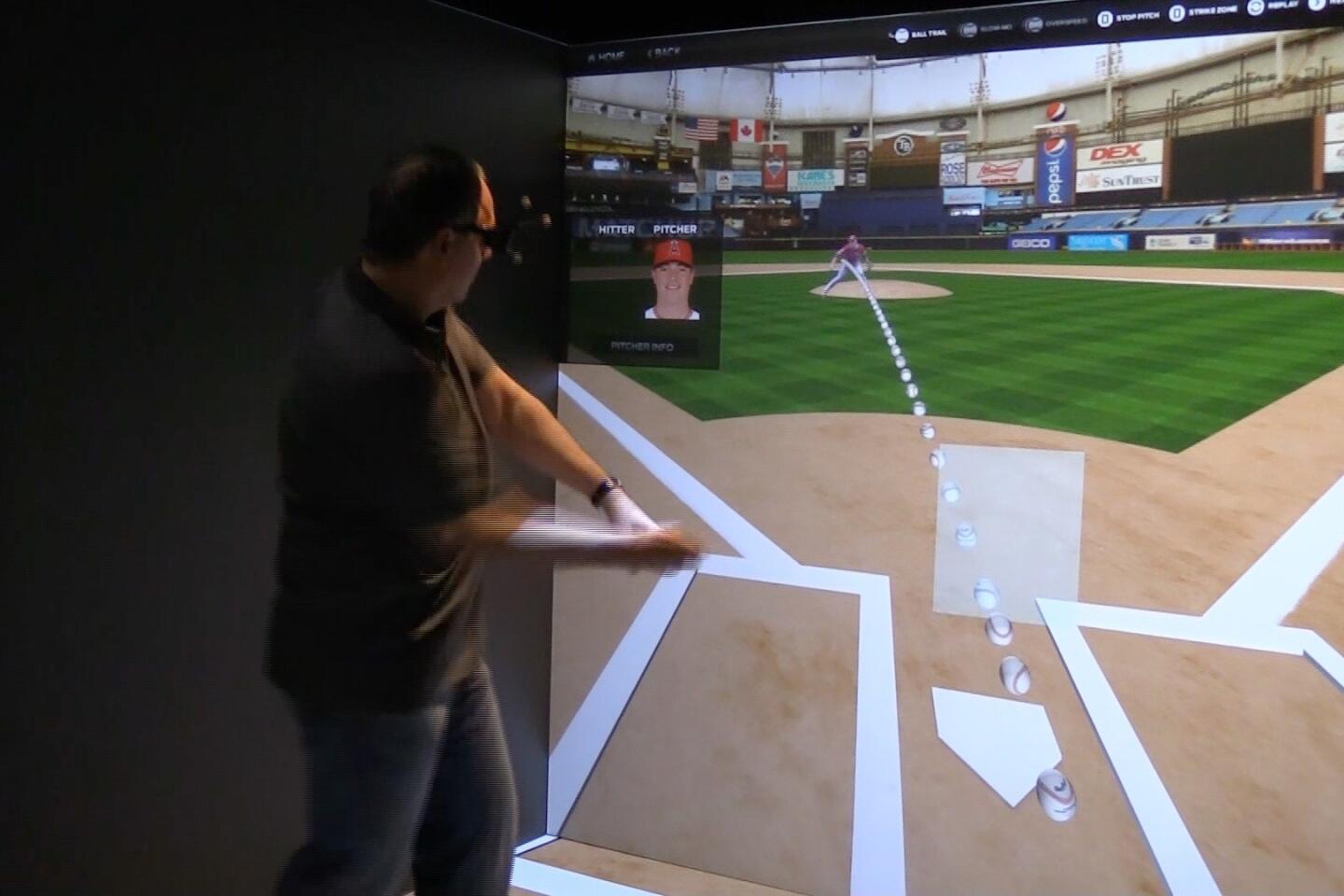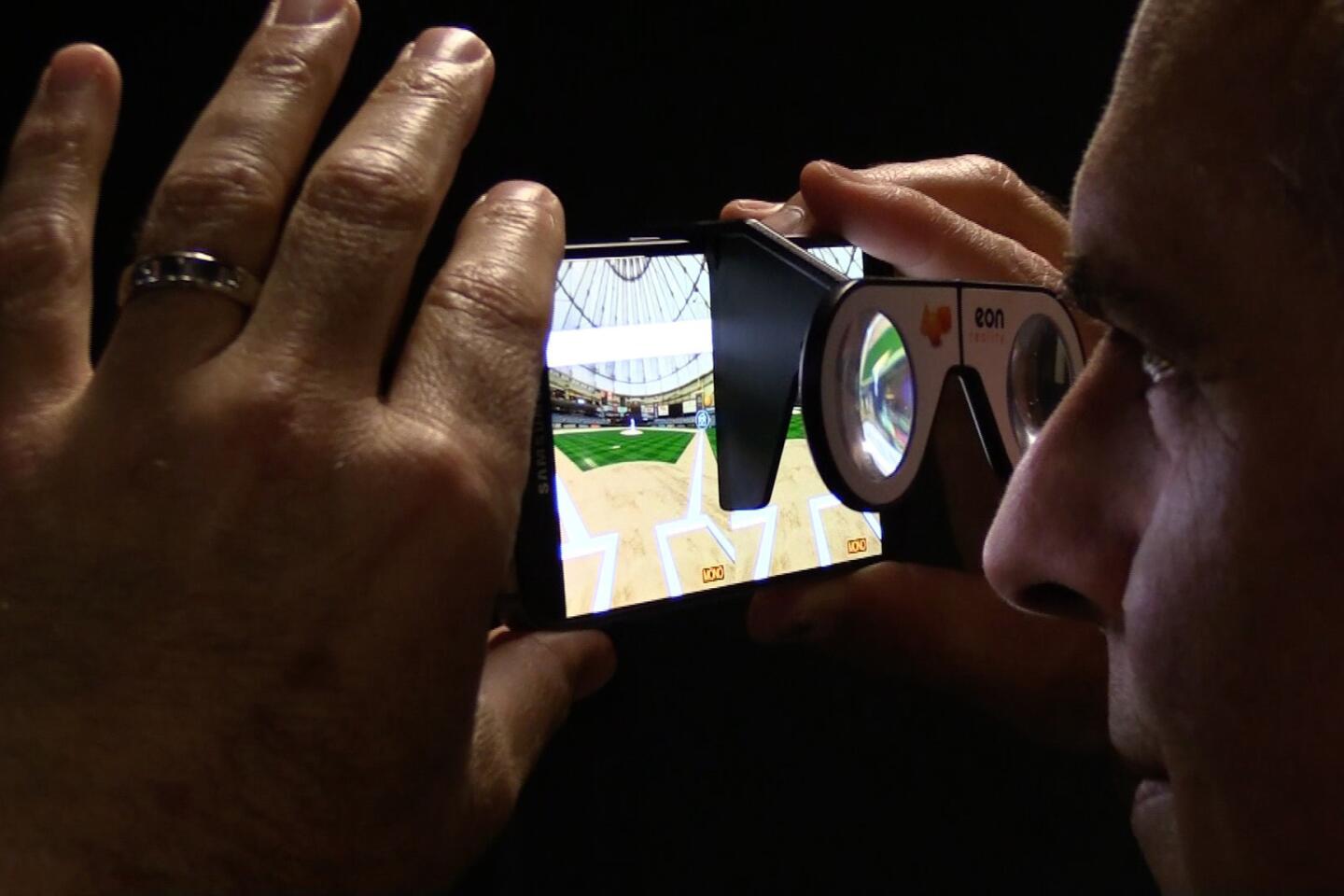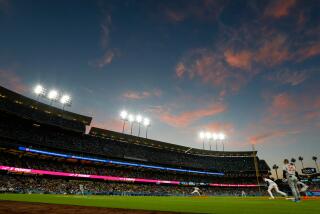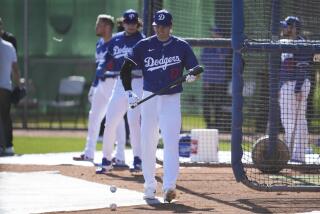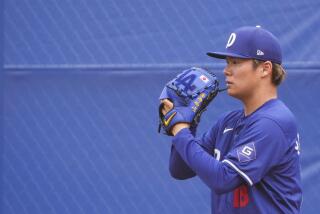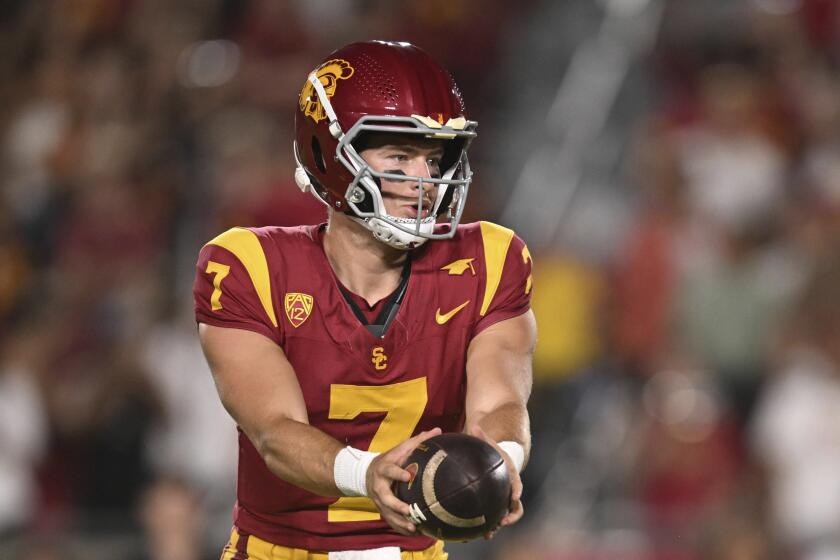Virtual reality technology is gaining a foothold in baseball as an aid in game preparation
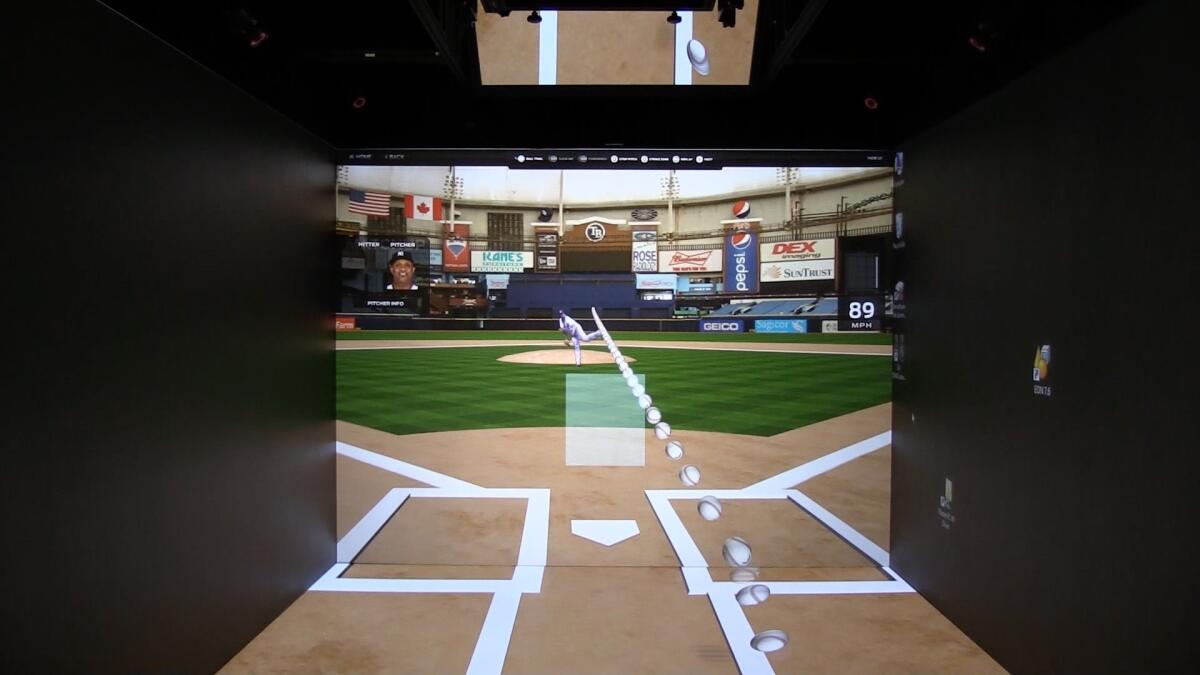
A pitch is delivered on the virtual reality simulator that is being used by teams in the majors.
To the plethora of statistics, video clips and scouting reports accessible with the tap of an iPad, add an even more cutting-edge interactive tool that players began using in game preparation this season: virtual reality.
The Tampa Bay Rays are among several teams that have made six-figure investments in a baseball hitting simulator known as an iCube. Players don 3-D motion-tracking glasses, step into a small room that replicates a stadium and have a pitcher on a screen throw to them in true detailed form.
“It’s a huge advantage because sometimes you don’t see guys very often,” Rays outfielder Steven Souza said before last Wednesday’s game against the Dodgers in Tropicana Field.
“Take Alex Wood. We’re going to see him one time this year, maybe once in the next six years. So being able to see him on the screen, what it actually looks like, is going to make for a little more familiarity before we get in the box.”

Does virtual reality have a future in baseball? Mike DiGiovanna and Lindsey Thiry discuss and demonstrate the technology.
Sure enough, later that night, Souza hit a solo homer off Wood in the fourth inning of Tampa Bay’s 8-5 victory. It was Souza’s sixth homer in 22 games after hitting 16 in 110 games last season. He entered the weekend with an .809 on-base-plus-slugging percentage, up from .717 last season.
Is there any correlation between his virtual reality training and improved power?
“It’s a small sample size,” said Souza, one of several Rays who have embraced the new technology. “Ask me the same question at the end of the year. At this point, I think it’s been very helpful.”
Brendan Reilly is the 29-year-old CEO of Kansas City-based Eon Sports VR, which developed and installed Tampa Bay’s simulator. While he acknowledged “nothing can replace the at-bat experience,” he believes virtual reality can help.
“Guys are getting to face the pitcher they’re going to face that night,” Reilly said. “They can pick up his timing, get a feel for how his ball moves, how he pitched to him the last time. . . . You feel like you’re on the field in a real, live game.”
Hitters already have extensive video libraries of pitchers and can track the release point, velocity, spin rate and amount of break of any pitch. They can glean tendencies from data showing how often each pitch is thrown in each count.
Could virtual reality be overkill for players who already feel inundated with information? Or could it replace some existing preparation tools?
“To be determined,” Angels General Manager Billy Eppler said. “If there starts to be notable success from using it and guys want to make it part of their regular routine, then it will catch on. If they look at it as something that is not necessary for their day-to-day preparation, then it will be optional. It’s up to the players.”
The Rays, in town to play the Angels this weekend, are the only team that has publicly confirmed its partnership with EON Sports VR. But there are others.
“We work with a handful of major league teams — that’s all they will allow me to say,” Reilly said. “The other teams are pretty tight-lipped. They act like they’re the U.S. Army. It’s like Fort Knox.
“They don’t want other teams to know they have it. If they have something their competition doesn’t, even though their competition may get it next year, that still gives them a leg up.”
The Rays don’t mandate that players use virtual reality. For those who do, the reviews have been mixed.
“It’s like a 3-D screen; it’s weird, a little different,” backup catcher Hank Conger said. “I’ve been trying to get used to it. You put on your glasses. You stand in the box and track pitches. There’s no swinging.
“I think it’s helpful from a timing purpose, but the movement of the ball, obviously, is going to be different than what you actually see.”
Souza would like to see virtual pitchers replicate more of the downward angle he sees from real pitchers.
“There are still some bugs to be worked out,” he said. “I don’t think it’s the perfect thing so far. It’s definitely on the right track.”
The NFL’s Dallas Cowboys and several college football teams, including Stanford, began using virtual reality last season. The Angels are not using it, but Eppler has tried it and is studying its merits.
“I thought it was realistic, better than anything created to date,” Eppler said. “I have a level of interest in it, but I wouldn’t say specifically if it’s something we will adopt or not.”
The Dodgers are not using virtual reality, but third baseman Justin Turner, who got a taste of it during a spring-training demonstration, can see the benefits.
“Guys are different types of learners,” he said. “Some are more visual than anything, so if you can actually see the pitcher while standing in the box, I think that’s a huge competitive advantage.”
Andrew Friedman, the Dodgers’ president of baseball operations and formerly the Rays’ GM, declined comment, saying, “There’s no upside to sharing our thoughts.”
Seattle GM Jerry Dipoto said he is “intrigued with the potential and will continue to monitor the overall usability of the products. I think it’s fascinating stuff.”
Reilly, who has retained former big league slugger Jason Giambi as an advisor, said some teams have ordered multiple VR simulators, to be used by both major league and minor league players, especially those looking to improve their pitch recognition and strike-zone awareness.
“A guy might have trouble hitting changeups down and away, so they can put him on a training curriculum to experience that and figure out how to master the problem areas,” Reilly said.
“And some minor leaguers experience a big drop-off once they get into the major leagues. They can face, virtually, a major league pitcher, even though they’re in the minors still developing their game.”
The next step is to develop a bat that can be used to hit off a virtual pitcher. Employees at EON Sports VR’s Irvine lab say that technology is at least two years away, but Reilly still sees plenty of value with the current technology.
“You can affect your actual performance in a game,” he said, “which is pretty unbelievable.”
Times staff writer Bill Shaikin contributed to this report.
Follow Mike DiGiovanna on Twitter: @MikeDiGiovanna
More to Read
Get our high school sports newsletter
Prep Rally is devoted to the SoCal high school sports experience, bringing you scores, stories and a behind-the-scenes look at what makes prep sports so popular.
You may occasionally receive promotional content from the Los Angeles Times.



